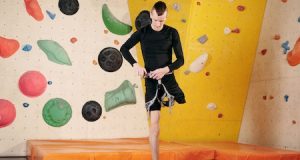Physical Activity For Disable includes Adaptive equipment, structured exercise, muscle-strengthening exercises, and barriers to participation. These activities should only be done under the supervision of a physician who will recommend the best equipment. Performing physical activity can increase your cognitive function and help you maintain a healthy lifestyle. Be aware that there are many barriers to participating.
Adaptive equipment
Adaptive equipment for disabled children allows for inclusion and functional impairment. These pieces of equipment provide support and stability for children with physical disabilities so that they can participate in classroom activities and remain as mobile as other children. Adaptive equipment promotes strength, stamina, and social skills in children with physical and mental disabilities. There are many types available for kids. Learn more about them below!
Accessible rooms are vital to enable people with disabilities to participate in physical activity. Wheelchairs must be able to move through doors that are large enough for disabled people to use. Adaptive equipment is used to modify aerobic classes, sports, and hand-weights training. These items can be tailored to meet the individual’s needs and requirements. For example, an Aldridge Arm Deadlift Strap enables a single-arm rower to use a rowing machine. A pull-up barbell can also be equipped with adaptive equipment Enquired disability Service Melbourne
Structured exercise
The health care community should decide whether a person with a disability should participate in structured exercise. People with physical disabilities will likely do fewer activities each day, but structured exercise can make up for the inactivity. There is no one way to exercise. Therefore, it is important to consult a doctor before starting any exercise program. A structured exercise program is beneficial for many reasons, but there are some things that you should keep in mind to make sure it is safe for you.
People with disabilities often face barriers that restrict their ability to exercise. These barriers may be program- or environmental. The environmental barriers include a lack of equipment and facilities that are easily accessible, as well as a lack of trained staff. Physical barriers include a lack of information about available programs, limited knowledge about exercise equipment or programming, and reduced motivation to engage in physical exertion. This study has two goals: to improve accessibility and safety of structured exercise programs designed for people with disabilities.
Exercises that increase muscle strength
Studies have linked aerobic muscle-strengthening activities to reduced risks of cardiovascular disease, type 2 diabetes, and cancer mortality. Although muscle-strengthening exercises may be beneficial at low levels of activity, there are risks. These benefits may be reversed if they are used at higher levels. Further studies are needed to determine the optimal muscle-strengthening activity regimen. Muscle-strengthening activities not only have cardiovascular benefits, but they also improve overall fitness which, in turn, reduces the risk for heart disease, cancer, and other respiratory diseases.

Adults should participate in muscle-strengthening exercise to increase their strength and endurance. All major muscle groups should participate in strength training. Two methods are used by physiotherapists to measure muscle strength. To test a client’s muscle strength, they use resistance to exercise the muscle. This resistance is rated using a five-point scale. The second method, the dynamometer, requires the client to exert a force in kilograms or pounds.
Barriers to participation
Inactivity is a common problem in the United States. It affects approximately 23 percent of adults and 80 per cent of adolescents. This percentage increases to more than 50% for people with disabilities. While inactivity is unhealthy for everyone, it appears to have even greater effects on people with disabilities and those with traumatic brain injuries. There are many barriers that restrict physical activity for people with disabilities. But, these barriers are not always obvious. Researchers have identified specific barriers that prevent people with disabilities from
participating in physical activity.
There are many factors that can hinder physical activity among children with and not disabilities. Limitations include parental behaviour, lack of interest, limited transportation, societal attitudes, and lack of motivation. Parents also report frustration when their child is not able to compete with others. One-on one instruction and positive encouragement have been proven to increase participation. This study is a first step towards developing strategies for overcoming these barriers. The study includes parents and children with disabilities. It also considers the importance and accessibility of facilities and opportunities for children with disabilities.

